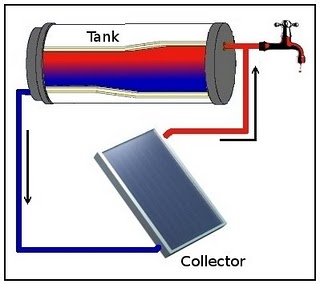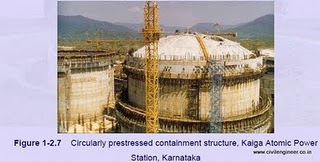AERB : No, Mera Joota (Nahee) Hai Japanee!
By Sadanand Patwardhan
04 July, 2011
Satark
* Indian Reactors Can Keep Cool without Power for a Week *, claims S K Sharma, former Chairman of Atomic Energy Regulatory Board of India (AERB), and head of the safety review committee appointed by AERB to study the status of Indian Nuclear plants in the wake of the disaster at Fukushima Daiichi Nuclear power plant (FDNPP based on Boiling Water Reactors- BWR ) that was engendered by the tsunami in March this year. At FDNPP the tsunami knocked out the backup reactor core cooling system by flooding the diesel gen-sets, which were supposed to power it. In case of Indian plants, ‘station blackout working group' found that if the grid power is lost, and even if the * emergency diesel generators at the plant fail *, core cooling of the reactor would still be accomplished for about 7 days * without any help from outside sources *. < Does this mean core cooling will continue for 7 days regardless of what plant operator & other emergency response crew don't do or do? > The Indian Express report by Mihika Basu states this to explain how this *autonomous feature functions*,
1. “the design provides for cooling the core by a method called * thermo-siphoning * by charging * firefighting water * to the steam generators that are located at a higher elevation than reactor core.”
2. “Water is * charged using diesel engine driven pumps * situated above the *maximum design basis flood level*”.
3. “While cooling equipment at Fukushima plant required power supply, the design of the Indian pressurized heavy water reactors ( PHWR )-based plant help them tackle complete loss of power for a few days”.
The above is bit confusing. Thermo-siphon refers “ to a method of passive heat exchange based on natural convection which circulates liquid without the necessity of a mechanical pump ”. Essentially when no pump (active circulation) is required implies no motive power is needed of any type. So even if there is a complete loss of power the thermo-siphon will continue to work.
Source : http://en.wikipedia.org/wiki/Thermosiphon
However, the next statement says water is charged using diesel engine driven pumps. Now, if thermo-siphon requires no motive power –water circulation occurs through convection-, then where is the need for diesel engines driven pumps.
To understand this conundrum one would have to visit reactor design. A nuclear power plant uses the heat of nuclear fission to generate steam that drives steam turbines to produce electric power. In a BWR the water is allowed to boil when it circulates around the core and the steam is taken directly to steam turbines in a single loop and brought back after cooling and condensation. In contrast, PHWR has two circulation loops. In the first loop *pressurized water* is circulated around the core that gets superheated but doesn't boil –it is under pressure- and is sent to a heat- exchanger where it cools by transferring its heat to water in second loop and returns back under pressure to the core. The water in the secondary loop is non-pressurized and is allowed to boil for conversion to steam to drive turbines. On condensation and cooling the water in this loop is returned back to the heat-exchanger. It is in the secondary loop that circulation is established through thermo-siphon. But primary loop still needs external motive power to circulate water and to pressurize it. In case of a shutdown of a nuclear plant, even when controlled fission is stopped, the reactor core continues to be very hot for long time afterwards. Therefore, reactor core cooling process has to go on continuously even if plant is shut. This cooling process normally requires power. If power is completely knocked off as happened in FDNPP, then water circulation stops and ends the cooling of core; which is then threatened with a meltdown. A PHWR reactor has two water circulation loops . Even if secondary loop works without power, it is dependent upon the primary loop for the * thermo-siphon effect * . And the primary loop does require external power source to keep it going . Also primary loop would need a working secondary loop for its own cooling . Therefore to suggest that Indian Nuclear Power Plants are safe because they are based on PHWR, which makes use of * thermo-siphoning effect * is bit disingenuous indeed. Therefore, the case made out by S K Sharma really hinges on only one *fact* - the * diesel engine driven pumps * are situated above the *maximum design basis flood level*. The mention of thermo-siphon effect therefore is just a red herring to distract from what is theoretically just a single safeguard – pumps are situated above the *maximum design basis flood level*. Also what to make of this * single safeguard * in the light of the statement of ‘Station Blackout subcommittee' that * even if the * emergency diesel generators at the plant fail *, core cooling of the reactor would still be accomplished for about 7 days *. These *emergency diesel generators * should be & presumably are separate & distinct from the * diesel engine driven pumps*, which are responsible for maintaining circulation in the primary loop. If so, this reported statement too is somewhat misleading because emergency diesel generators have no role to play in the reactor core cooling system anyway.
How much trust can one put in that single safeguard is the crucial issue. At FDNPP the Diesel Generators to power the core cooling system were placed in the basement of the plant. The monstrous tsunami flooded the plant area knocking off the Diesel Gen-sets. But even in the design consideration of FDNPP, tsunami was factored in based on the knowledge in 1960s and there too plant was located above the * maximum design basis flood level *. The point is that nature hit Japan with 9 magnitude earth quake with epicentre just few kilometres below the earth's surface . This threw a monstrous tsunami on Japan 's eastern seaboard that made a mockery of all design considerations . Almost entirely the damage caused in Japan during this episode was due to the tsunami , whereas all civil & mechanical structures not only at the plant but elsewhere withstood the massive earthquake . Let tsunami be left aside for the sake of argument. Do the civil & mechanical construction practices in India inspire confidence?
L & T Limited is a frontline EPC contractor for civil and mechanical construction jobs in India including for NPPs. It has a formidable reputation, but it has encountered some major accidents in its construction jobs. Just recently a beam collapsed in the Monorail construction contract that is awarded to L&T. “ Two persons died and three were injured when a beam weighing 60 tonnes collapsed on them at the construction site of the Mumbai monorail project on RCF Road in Chembur around 6.30 pm on Friday . All five are employees of Larsen & Toubro, which is executing the project ( http://tiny.tw/7Ri ) ”. The trial runs on this section of Monorail were planned for Mid-August.
Back in 1994, the inner containment dome of the Kaiga NPP collapsed during construction. This construction too was executed by L&T.
“ On 13 May 1994 , the inner containment dome –the structure that is supposed to prevent the escape of radio-activity into the environment should an accident occur- of one of the units of Kaiga NPP collapsed during reactor construction. The dome itself had been completed, but cabling and other tasks were being carried out (Havanur 1994). The official term for what happened is delamination, but that does little justice to the approximately 130 tonnes of concrete that fail from the top of the containment (Subbarao 1998) - http://tiny.tw/7Rj page 50 ”.
Accidents do occur despite taking due care, and L&T is no exception. But in India it is rarely established if an accident has occurred due to supervisory negligence, design deficiency, faulty materials, improper equipment, inadequacy of training, human fatigue, or some other unseen factors. But looking at the country's track record in frequency and seriousness of construction related accidents or industrial safety, it is very hard to imagine that things would be happening any differently in the NPP sector, either during construction or in operations. The opacity behind which India 's nuclear establishment operates is legendary even after accounting for the general nature of this industry worldwide.
Knowing this, who will be willing to bet that Indian NPP would withstand an extreme seismic event that exceeds maximum design criteria? What would happen if the structure on which diesel engine driven pumps are situated above the *maximum design basis flood level* were to collapse? Are we designing & building better & safer structures than the Japanese? Is that what AERB is not claiming but still believes in? Don't believe anyone's words or qualifications. Best it is to check the track record. And that doesn't inspire confidence.
Comments are not moderated. Please be responsible and civil in your postings and stay within the topic discussed in the article too. If you find inappropriate comments, just Flag (Report) them and they will move into moderation que.




